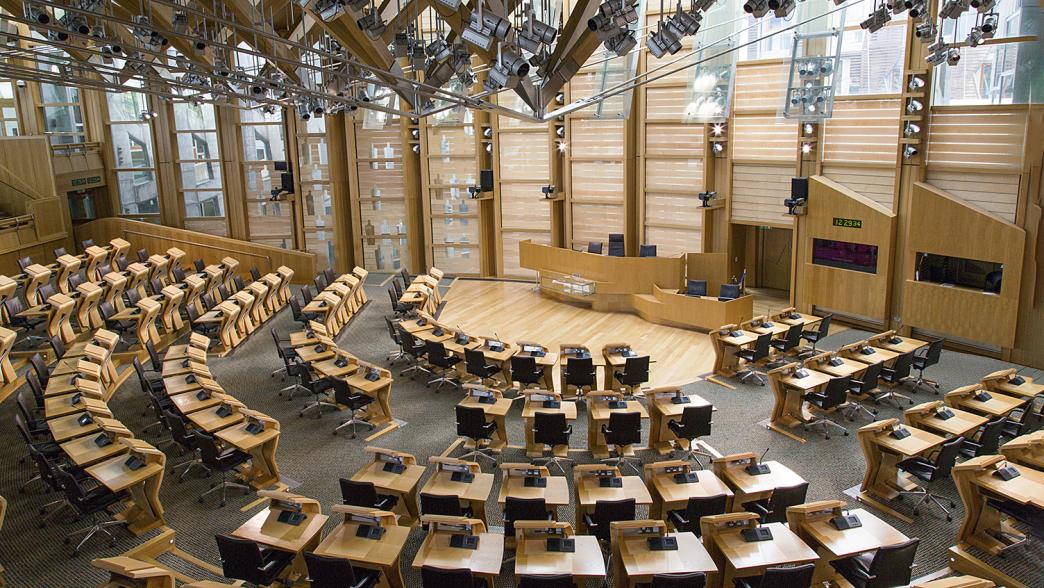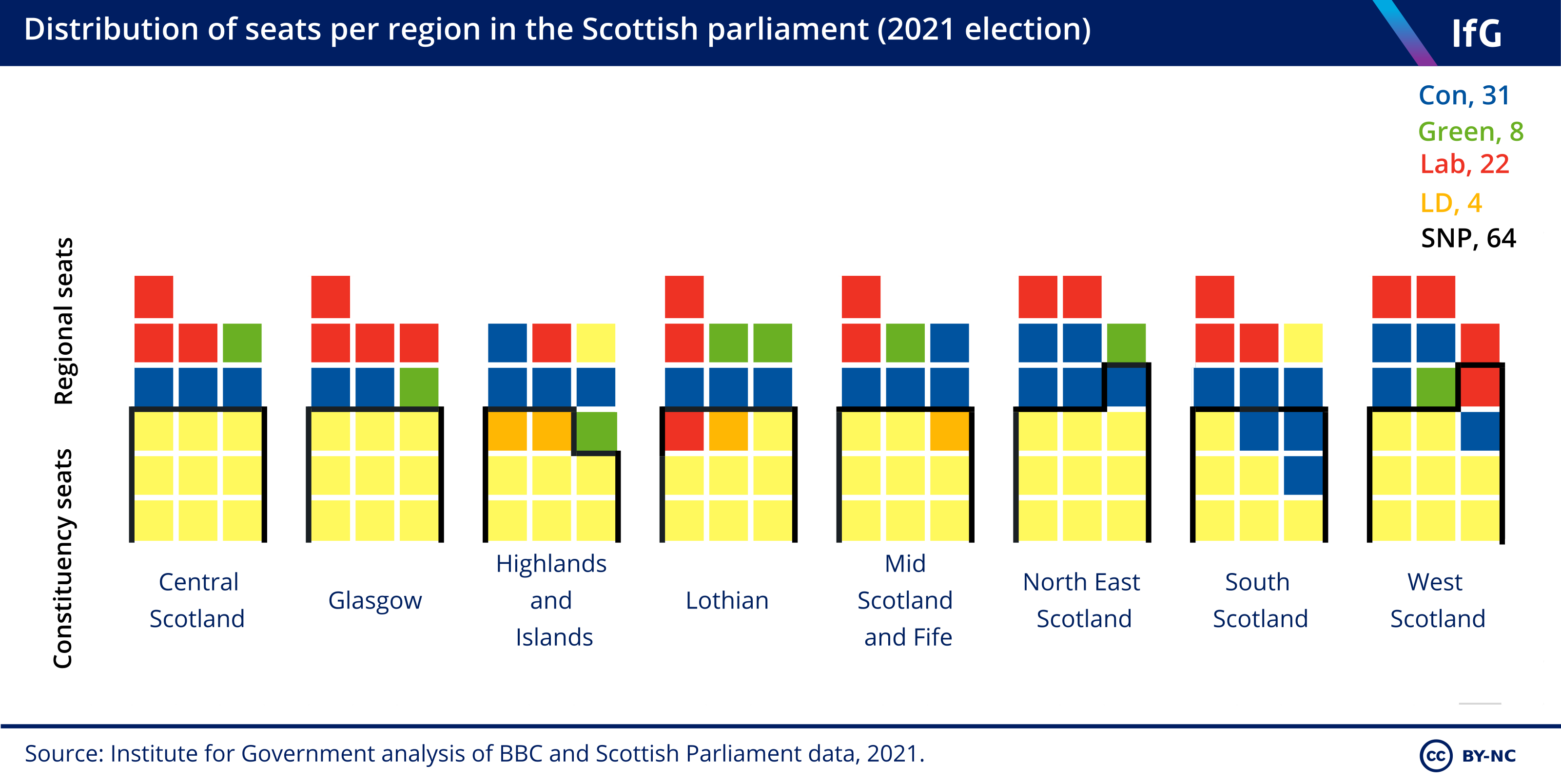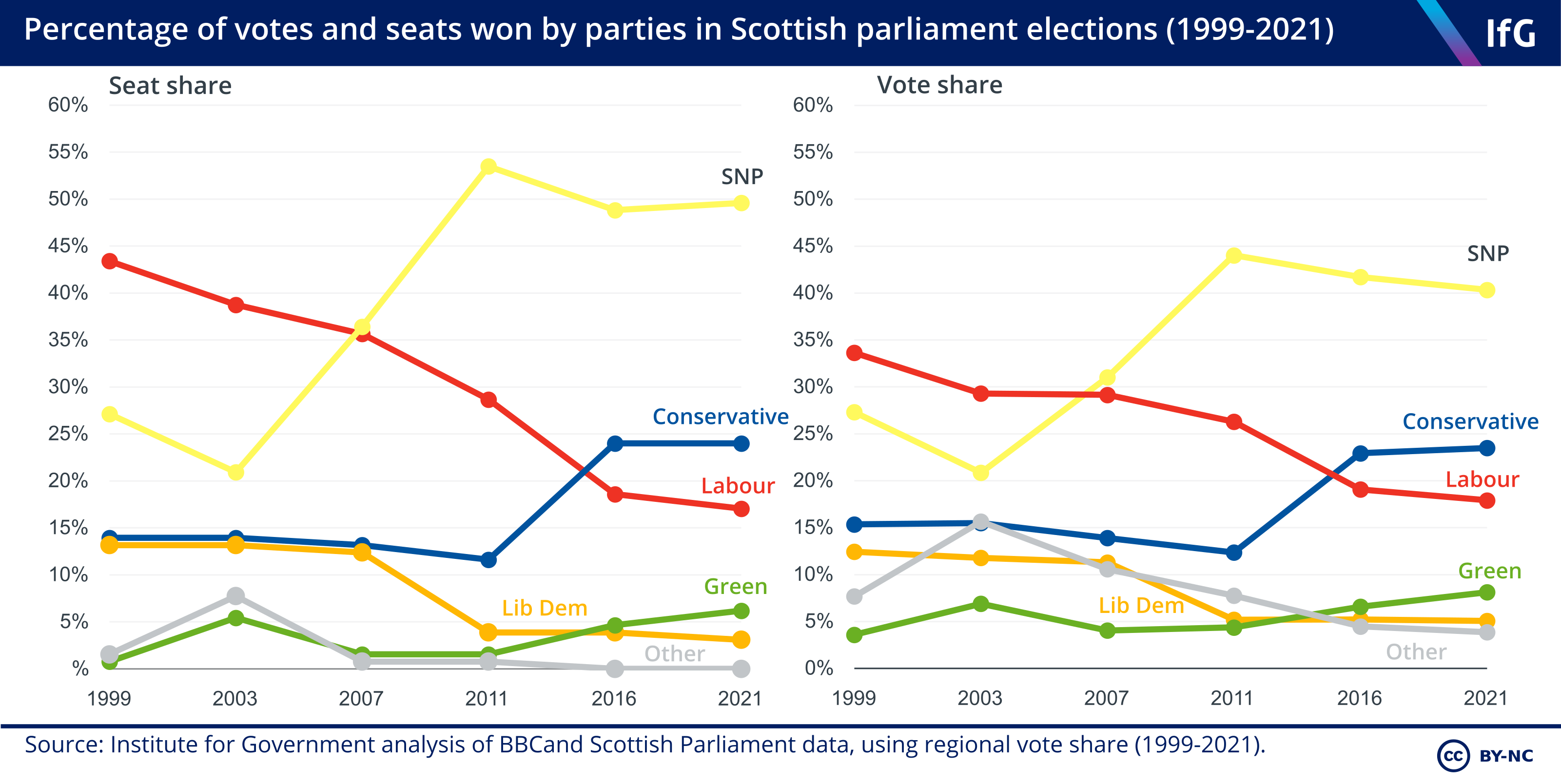Scottish parliament
The Scottish parliament at Holyrood in Edinburgh is the devolved legislature of Scotland.

The Scottish parliament at Holyrood in Edinburgh is the devolved legislature of Scotland. It is unicameral, which means it only has one chamber, unlike the UK parliament in Westminster which has an upper house (the House of Lords) and a lower house (the House of Commons).
Why was the Scottish parliament created?
Devolution was designed to give the Scottish people “a greater say over their own affairs”, according to the UK government at the time, 7 http://web.archive.org/web/20111129003939/http://www.scotland.gov.uk/government/devolution/scpa-05.asp and to address the “democratic deficit” felt in then Labour-dominated Scotland after a long period of Conservative rule.
There was also an aspiration that devolution could foster a more consensus-based and less executive-dominated style of politics, reflected in the use of proportional representation to elect the new Scottish parliament.
The Scottish parliament was created in 1999 as part of the Labour UK government’s plans to devolve power across the UK. Its creation was approved in a referendum in 1997 with 74% of votes cast in its favour, on a turnout of 60%. The devolution proposals had been developed by the cross-party and civil society Scottish Constitutional Convention, which functioned from 1989 to 1995.
Previous proposals for a Scottish assembly had fallen at a referendum in 1979. Although a majority of Scottish voters had backed the plans, their number did not meet the required threshold of 40% of the total registered electorate for the vote to carry.
What powers does the Scottish parliament have?
Devolution to Scotland operates on a ‘reserved powers’ model. This means any areas not specifically reserved to the UK parliament are devolved to Edinburgh.
The Scottish parliament has the power to legislate in most social policy areas including health and social care, education, and housing. It also has powers over local government, agriculture, the environment and most aspects of transport. Unlike its Welsh counterpart, the Scottish parliament is also responsible for policing, prisons, probation and the justice system as a whole.
Some elements of economic policy including local economic development are devolved, but macro-economic measures that affect the whole of the UK are reserved to the UK parliament.
Most tax policy is reserved to the UK parliament, but the Scottish parliament has the most extensive tax powers of the three devolved legislatures. These include powers over local property taxes, stamp duty, landfill tax and the power to set all rates and bands of income tax other than the personal allowance. Some social security benefits, including disability benefits and discretionary housing benefits, are also devolved, but most are reserved to the UK parliament. 8 See Mackley A, Social security powers in the UK, House of Commons Library, 9 November 2020, https://commonslibrary.parliament.uk/research-briefings/cbp-9048/
How is the Scottish government funded?
The majority of the Scottish government’s funding comes from an annual block grant from the UK government, calculated using the Barnett formula. This increases or decreases devolved budgets based on changes to spending in England in comparable areas of devolved responsibility, taking into account population share. For example, if the UK government decided to increase health spending in England by £1bn, Scotland would receive an additional £97m, since its population is 9.7% the size of the population of England (although it would not necessarily have to spend this sum on health).
The Scottish government also receives income from those tax areas that are devolved. Some are collected directly by the Scottish government while others, including income tax revenue, are collected by HMRC and then allocated to Scotland.
Which parties are currently represented in the Scottish parliament?
There are currently five political parties represented in the 129-member Scottish parliament. The largest party is the Scottish National Party (SNP) with 64 MSPs, followed by the Scottish Conservative and Unionist Party with 31, and Scottish Labour with 22; the Scottish Greens have seven MSPs and the Scottish Liberal Democrats have four MSPs.
Finally, there is the presiding officer (a position similar to the Speaker of the House of Commons) who was elected as a Green MSP, but due to the impartial nature of the role holds no party affiliation in the Scottish parliament.
How do Scottish parliament elections work?
The Scottish parliament is elected via a voting system known as the additional member system (AMS), in which each voter has two votes. One is used to elect a constituency MSP to represent their local area. This part of the election uses first-past-the-post (FPTP), where the candidate with the most votes is elected – as in UK general elections.
The second vote is cast for a political party, rather than an individual candidate, on a regional basis. The results of the regional element of the electoral system are used to allocate ‘top up’ members to make the composition of the Scottish parliament more proportional.
Constituencies are grouped into eight large regions which each elect seven members. Each party puts up a list of candidates in each region, but voters cannot express a preference for individual candidates. They simply vote for their preferred party.
This part of the election uses a special formula (the d’Hondt method) that takes into account the vote share for each party and balances this out against the number of seats already won in the constituency vote, to calculate the number of top-up seats each party is entitled to. This means that if a party wins most or all of the constituencies in a given region, they are unlikely to win many or any regional seats, even if they win the largest number of regional votes.
Some parties only stand on the regional list rather than in individual constituencies.

What happens after the Scottish parliament elections?
Usually, the Scottish parliament is required to hold its first meeting within seven days, and to nominate a first minister within 28 days, of an election.
The Scottish General Election (Coronavirus) Act 2021 disapplied this rule, and instead allowed the presiding officer to determine when the new parliament would first meet, to adjust in case of any delays to the count.
Since there were no major delays during the counting process, the Scottish parliament reconvened on 13 May 2021, seven days after polling day, and elected a new presiding officer. Nicola Sturgeon was re-elected as first minister on 18 May 2021, 12 days after the election.
What has happened at previous Scottish parliament elections?
The Labour Party won the largest share of both votes and seats in the first two Scottish parliament elections, in 1999 and 2003. However, it fell short of an overall majority, entering a coalition with the Liberal Democrats to form the Scottish government.
In the 2007 election, the SNP increased their vote share significantly, narrowly beating Labour by 2% of the vote and one extra seat to become the largest party, forming a minority government with the support of the Scottish Greens. In 2011, the SNP won an overall majority of seats (69), enabling them to form a majority government. All three other major parties lost both seats and votes.
The SNP was again the largest party at the 2016 election, where it won 46.5% of the constituency vote and 41.7% of the regional vote, but lost its majority of seats and formed a minority government, again with the support of the Scottish Greens. Labour continued its decline, while the Conservatives increased their vote share and doubled their seats from 15 to 31.
Little changed following the 2021 election – none of the parties gained or lost more than two seats. The SNP increased their total of seats by one to 64, but fell one short of an overall majority. However, including the eight Green MSPs, the election resulted in a clear pro-independence majority in the Scottish parliament. The Conservatives equalled their record best result of 31 seats won in 2016, while Labour and the Liberal Democrats lost one seat each. In August 2021, the SNP and the Scottish Greens entered a formal ‘cooperation agreement’. Two Green MSPs became Scottish government ministers and the SNP agreed to implement some Green policies in exchange for the Scottish Greens supporting the government in confidence votes.

- Topic
- Devolution
- Keywords
- Intergovernmental relations The union
- United Kingdom
- Scotland
- Devolved administration
- Scottish government
- Legislature
- Scottish parliament
- Publisher
- Institute for Government